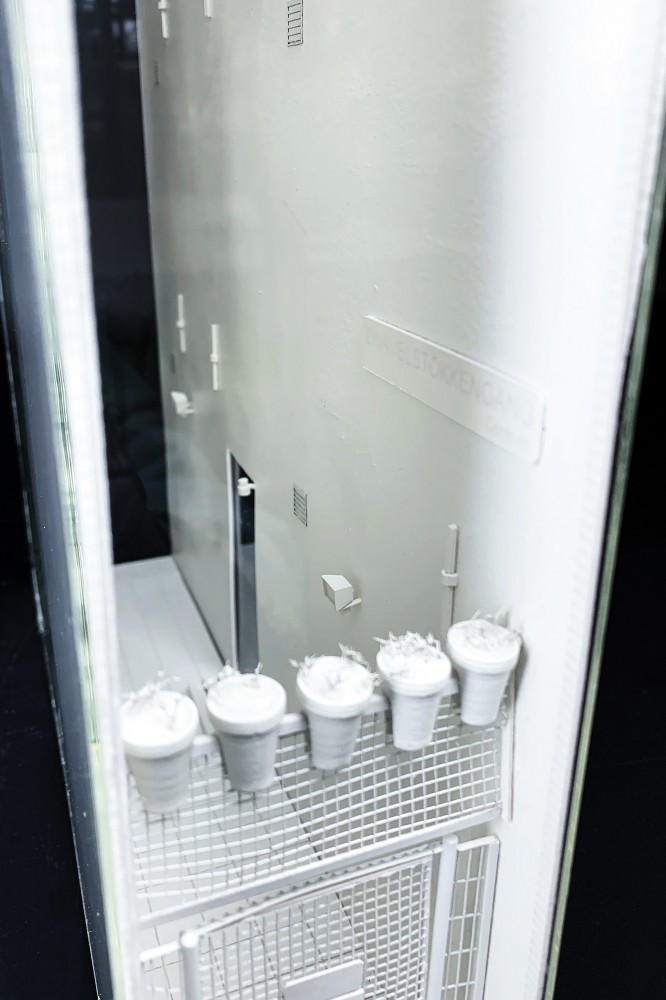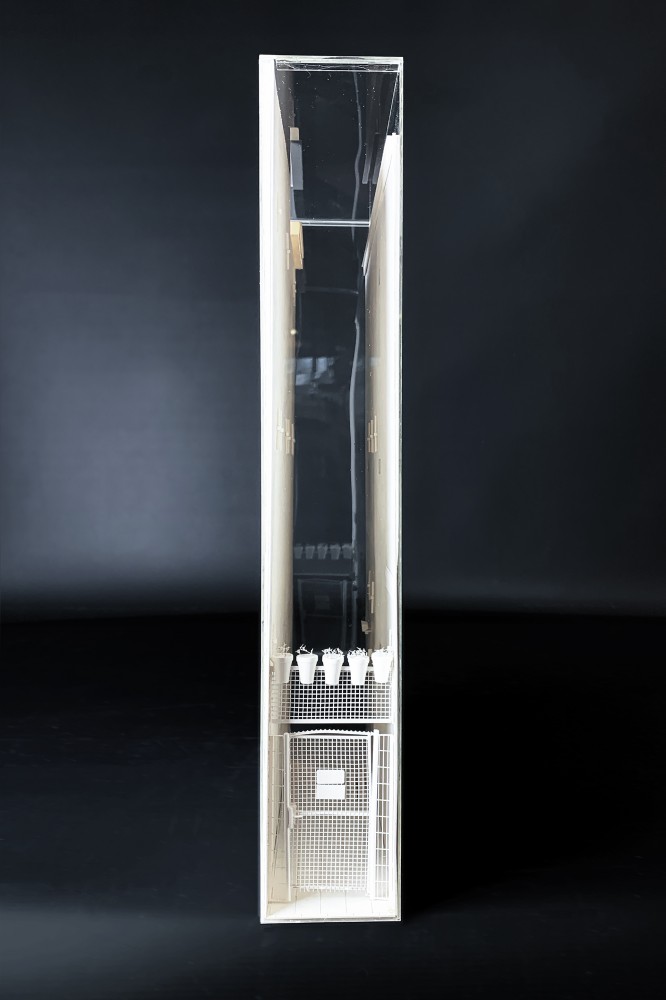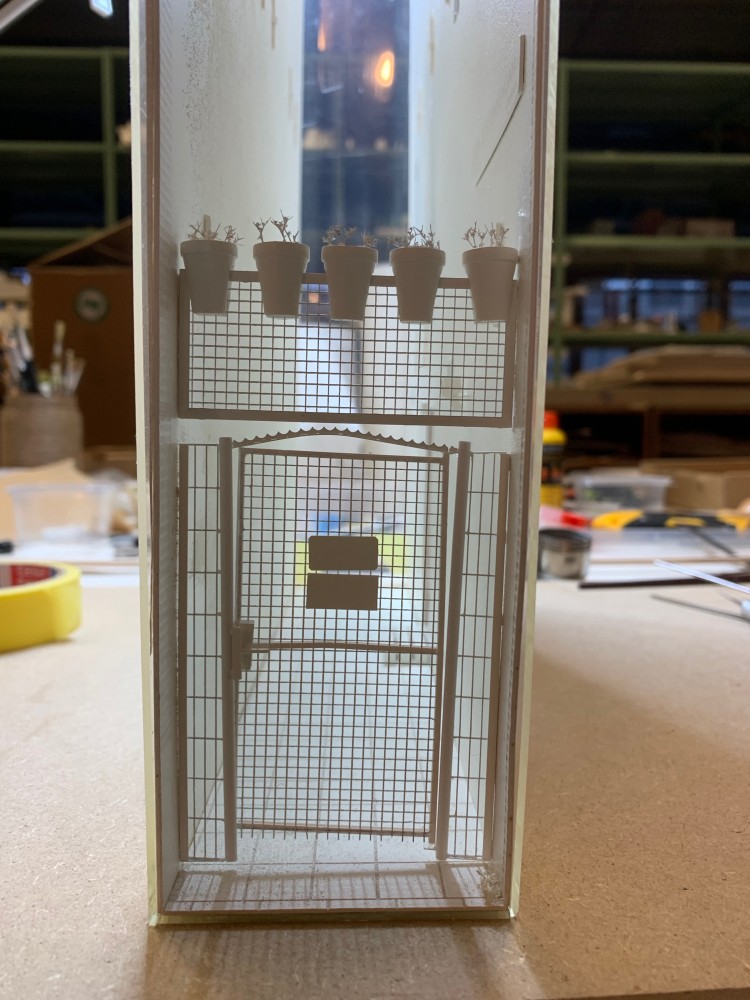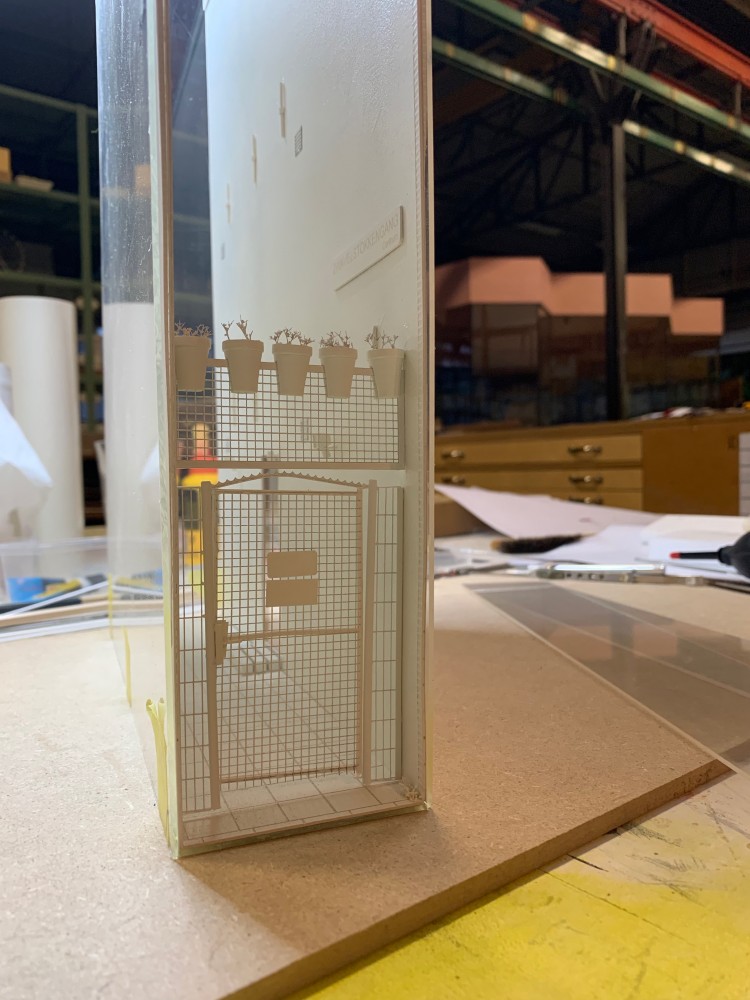Ma of the city scale 1:21.4
"Ma (間): ("gap", "space", "pause") is the term for a specific Japanese concept of negative space. In traditional Japanese arts and culture, ma refers to the artistic interpretation of an empty space, often holding as much importance as the rest of an artwork and focusing the viewer on the intention of negative space in an art piece." (Wikipedia)
The spaces between buildings, like narrow alleys in the city, always fascinate me. They are often undefined, vacant and ignored or people use it as they see fit otherwise. They are gaps in the city, usually not planned, spaces with nothing spectacular about them but just there. When I walk around the city, somehow I can't help but stop to look into those gaps.
As an architectural modelmaker, I am forced to concentrate on the building as an object to make it into a scaled representation. Nevertheless, when I am working on a model of a building, I tend to pay attention to the gaps and voids around the model, just as I do the gaps in the alleys of cities, I feel the same way about architectural models. These "empty spaces" are not noticed or appreciated in architectural models where the building is the main product. However, I believe that it is the empty space around the object that enriches the object itself. We Japanese refer to this as Ma.
When I learned about the format of the manuscript, I immediately thought of an "alley. The 7cm thickness or depth of the Manuscript as an object looked like a 7cm gap to me.
1.5 meters. This is a new measure for humanity called "social distance" in The Netherlands, which was hastily introduced due to the recent pandemic. This is not a universal scale, but varies from country to country. In the Netherlands it is 1.5 meters, but in Japan it is 2 meters for instance. This measure is based on some kind of scientific evidence, but I can't shake the interest in the fact that people's behaviour is defined or limited by such a vague measure. And 1.5 meters is the approximate width of the gaps and alleyways in the city that I find fascinating.
If you reduce 1.5 meters to 7 centimeters, the scale is approximately 1:21.4 scale.
I captured the one of the gaps in Amsterdam, which is exactly 1.5 meters wide, on a scale model at a scale 1:21.4.
I sealed the lid of the transparent box which contains the scale model of this gap over an actual alley to complete it. In this way, even if the space of the gap as a scale model is formed by a reduced abstract expression, the only air inside the box is real, and I can say that I succeeded in capturing the gap or I say "Ma" in the city which I'm fascinated with.















































































































































































































































